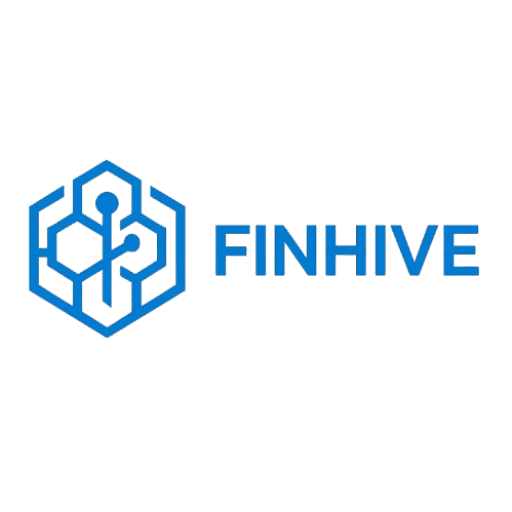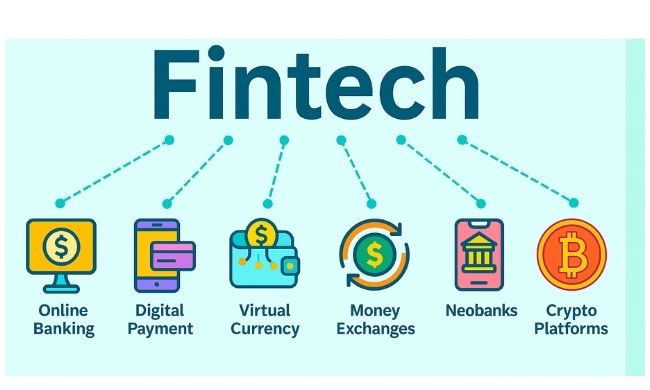There’s a new badge of honor on the African tech scene: landing a spot on CNBC & Statista’s 2025 World’s Top 300 Fintech Companies list. Ten African startups—from Nigeria’s ubiquitous OPay to Kenya’s asset-financing trail-blazer M-KOPA—made the cut this year. It’s more than bragging rights. The recognition validates years of heads-down building during brutal funding winters and proves that solutions forged in Lagos, Nairobi, and Cairo can stand shoulder-to-shoulder with the PayPals and Revoluts of the world. In an un-ranked roster that spans seven core service segments, Africa’s cohort showed particular muscle in payments and alternative financing, while PiggyVest flew the wealth-tech flag solo. The 2025 edition arrives at a moment when venture cheques are thinner but expectations higher: investors want efficiency, regulators demand safety, and users won’t tolerate downtime. That ten African companies still cracked the global elite signals a region that’s quietly maturing from promise to performance.
The 2025 Global Fintech Landscape: Why This List Matters
Forget vanity metrics—global rankings can influence who gets the next multimillion-dollar partnership or banking licence. Fintech deal values fell nearly 40 % worldwide in 2024, yet digital wallets, embedded finance, and alternative credit products kept gaining users. In emerging markets, necessity still trumps macro gloom: cash shortages, pricey cross-border transfers, and credit invisibility create real pain points. Western incumbents often move too slowly, opening the door for nimble up-starts from Jakarta to Johannesburg. CNBC’s list cuts through hype by spotlighting companies with measurable traction—user growth, revenue per head, and scalable tech stacks. For policymakers it’s a cheat-sheet on which models deserve supportive regulation; for corporates it’s a shortcut to credible partnership prospects. By celebrating transparent metrics, the ranking nudges founders away from vanity valuations toward sustainable business fundamentals.
How CNBC & Statista Built the Ranking
Compiling the Top 300 wasn’t a finger-in-the-wind exercise. Research firm Statista first screened over 2,000 fintechs across 30+ countries. Hard data—revenue, compound annual growth, head-count, even uptime metrics—were weighted heavily, while “buzz” factors such as headline valuations carried little sway. Companies then self-reported granular KPIs, later cross-checked by Statista analysts. The survivors were slotted into seven buckets: Payments, Digital Banking (Neobanking), Wealth-Tech, Alternative Lending & Financing, Regulatory & Risk, Financial Infrastructure, and Embedded & Enterprise Finance. Crucially, the list is un-ranked; a Kenyan lender and a German reg-tech appear on equal footing, emphasising category excellence over absolute size. That framework allowed nimble regional leaders like Paymob to rub shoulders with global heavyweights like PayPal without competing on raw transaction volume alone.
Africa’s Fintech Ecosystem Hits an Inflection Point
Across the continent, 470 million smartphone users and a median age of just 19 collide with chronic under-banking—it’s the perfect recipe for leapfrog tech. Regulatory stances have also thawed: Nigeria’s Central Bank issued digital banking licences at record speed in 2024, while Kenya’s Digital Credit Providers Act finally clarified interest-rate caps. Add in near-ubiquitous mobile-money rails and you get a sandbox primed for scale. Payments remain the gateway drug: once a startup owns the checkout, it layers on credit, savings, and insurance. That’s why five of the ten African honorees—including OPay, PalmPay, Moniepoint, and Interswitch—sit squarely in the payments category. But diversification is accelerating. PiggyVest’s wealth-tech play shows that middle-class Africans are ready for goal-based savings, while M-KOPA’s asset-financing model brings previously unaffordable smartphones within reach of rural users. Talent, however, is becoming the new bottleneck; senior Kotlin developers now cost almost as much in Nairobi as in Berlin. Yet the ecosystem’s flywheel—customer demand, investor curiosity, and regulatory pragmatism—spins faster each year, setting the stage for deeper continental representation in future global rankings.
Meet the 10 African Champions on the 2025 List
Below is a whistle-stop tour of the continent’s standard-bearers :
- OPay (Nigeria) – Super-app serves 60 million users, processing everything from bike-hailing to bill-pay; landed in the payments category alongside PayPal.
- PalmPay (Nigeria) – 35 million users and 15 million daily transactions; expanding to South Africa and Côte d’Ivoire in 2025.
- Moniepoint (Nigeria) – Valued above $1 billion; full-stack SME banking platform handles 1 billion monthly transactions worth $22 billion.
- PiggyVest (Nigeria) – Seven million savers, ₦2 trillion paid out; sole African wealth-tech entrant.
- Interswitch (Nigeria) – Payments pioneer since 2002; 85 million Verve cards issued across Africa.
- Paymob (Egypt) – Empowers 350,000+ merchants with omnichannel payments; raised a $22 million Series B extension in 2024.
- MyFawry (Egypt) – Consumer arm of e-payments giant Fawry; 2024 revenue hit $121.6 million with net profit of $35.5 million.
- Yoco (South Africa) – 200,000 merchants rely on its low-cost POS devices; total funding tops $107 million.
- M-KOPA (Kenya) – Seven million customers financing smartphones and e-bikes via pay-as-you-go; now active in five countries.
- Tala (Kenya) – Alternative credit scoring for eight million borrowers; total funding $360 million to date.
Why Payments Still Dominate—But Wealth Tech Is Catching Up
6.1 Payments: The On-Ramp to Everything Else
Walk into any Lagos bus park or Nairobi matatu stage and you’ll see nimble QR codes taped to windscreens and drivers brandishing portable POS gadgets. Payments remain Africa’s “day-one” problem because nothing else in consumer finance works until money moves—cheaply, instantly, and in tiny denominations. From 2020 to 2024, wallet-to-wallet transactions on the continent climbed from roughly $495 billion to $836 billion, even as total venture funding shrank. Why? Network effects. Each new merchant that accepts digital cash makes the rails more valuable for every other participant, while each additional customer gives issuers a fatter pool to cross-sell credit, savings, or insurance.
6.2 Three Catalysts Behind the Payment Surge
- Mobile-Money Rails Have Matured – M-PESA’s average downtime is now measured in seconds per month, freeing startups from expensive redundancy layers.
- Interoperability Mandates – Regulators in Nigeria and Ghana forced bank and wallet operators onto unified QR and instant-payment schemes, slashing merchant integration costs by up to 70 %.
- Sub-$30 Android Handsets – Chinese original-design manufacturers keep cranking out NFC-enabled smartphones that farmers and kiosk owners can afford, pushing penetration into the last mile.
6.3 Wealth-Tech’s Quiet Inflection
Yet while payments grab headlines, wealth-tech growth curves are finally bending upward. PiggyVest added two million new savers in 2024 alone, and Egypt’s Thndr says 85 % of its brokerage accounts belong to first-time investors. What changed? Disposable income in urban centers rose even during the pandemic thanks to remote gig work, and central banks have ruthlessly wrung inflation from most big economies, making long-term planning attractive. Expect a shift from one-size-fits-all “cash jars” to algorithmic portfolios and dollar-denominated ETFs over the next 24 months. Still, wealth-tech cannot dethrone payments overnight—the latter will keep subsidizing user acquisition for every other vertical.
Funding Realities: Coping with the 2024–25 Capital Slowdown
7.1 The Numbers Nobody Can Ignore
Global fintech funding fell 38 % year-on-year in 2024, but Africa got hit harder, plunging almost 50 % as Western LPs re-priced risk. Term sheets that once closed in six weeks now drag for six months; down-rounds have shed their stigma. Even marquee players—think Chipper Cash and Wave—trimmed staff to conserve runway.
7.2 Survival Playbook for Founders
- Revenue Before Reach – Investors now pounce on gross-profit margins, not vanity GMV. Companies that can’t squeeze 35 %+ contribution margins by Series B are politely shown the door.
- Embedded Finance = Embedded Capital – B2B infrastructure startups such as Anchor and Stitch are bundling revenue-share agreements with corporates to sidestep equity dilution.
- Local Currency Raises – Egyptian and Kenyan funds increasingly deploy shilling- or pound-denominated vehicles, insulating founders from brutal forex swings.
7.3 Signals of a Turnaround
Anecdotes of gloom obscure green shoots. Norrsken22’s second Africa-focused growth fund closed at $205 million in April 2025, while Nigeria’s Sovereign Investment Authority carved out ₦75 billion for a fintech stability facility. Debt capital markets, too, are thawing; M-KOPA secured a $250 million asset-backed securitisation in May—Africa’s largest to date. The takeaway: capital is still available, but only for models with demonstrably tight unit economics.
Financial Inclusion: The Metric that Really Counts
8.1 From Vanity Users to Active Accounts
Crunch the numbers and a sobering truth emerges: more than 40 % of registered mobile-money wallets in sub-Saharan Africa remain dormant after 90 days. The next frontier isn’t signing up the unbanked; it’s activating and retaining them. That means solutions that nudge daily usage—pay-as-you-go solar, nanoloans repaid with airtime, or gig-worker salary advances that drop every evening.
8.2 Gender & Rural Gaps
The digital-financial gender divide stubbornly hovers at 8–9 percentage points across most large markets. Design, not hand-outs, will close it: interfaces in Hausa or Amharic rather than English, cash-in points in open-air markets instead of air-conditioned bank halls, and credit-scoring models that weight inventory turnover rather than payslips. Rural usage lags for a different reason: signal. Satellite-backed telcos like Lynk and AST SpaceMobile promise to blanket white-spot villages with cheap broadband by 2027, a potential game-changer for wallet penetration.
8.3 Impact Measurement 2.0
Donors once tallied success by counting new accounts; now they audit income uplift. USAID’s latest Digital Finance Index scores fintechs on household resilience, such as the ability to cover emergency expenses without selling assets. Expect more venture firms to bake similar social KPIs into term sheets, especially as climate-adaptation capital flows to ag-fintechs offering crop-insurance bundled with weather alerts.
Regulatory Headwinds & Talent Shortages
9.1 The Pendulum Swings on Policy
African central banks flirt between innovation sandboxes and outright freezes. Nigeria lifted its crypto ban in December 2024, only to slap a 1 % levy on every digital-asset withdrawal four months later. Ethiopia green-lit its first two private mobile-money licences, then capped interest on digital loans at 18 %, throttling profitability. Such whiplash forces startups to bake regulatory buffers—time, cash, and compliance tooling—into every launch schedule.
9.2 Compliance Becomes a Competitive Moat
Reg-tech spending among tier-one fintechs is up nearly 70 % since 2023. Firms like Smile Identity now verify more than a million KYC checks per month across 13 markets, while IdentityPass and Dojah fight fraud at API speed. Startups that treat regulators as partners—submitting sandbox data dashboards or co-designing financial-literacy programs—are winning fast-track approvals that laggards can only envy.
9.3 The People Problem
Talent is scarcer than capital. Senior backend engineers command $85 k–$120 k in Nairobi, double 2019 rates. Egypt and Tunisia churn out bright graduates, but brain-drain to Gulf giants like STC Pay or Dubai’s Tap Payments intensifies. Some fixes on the horizon:
- Remote-First Hiring – Venture-backed companies now routinely source Rust developers in Kigali and data scientists in Abidjan.
- Equity Liquidity Programs – Secondary share sales every 18 months keep early staff from jumping ship.
- Specialized Bootcamps – Yoco’s GoStack academy grooms former support agents into junior devs within six months, filling mid-level gaps fast.
Looking Ahead: Will Africa Double Its Representation by 2027?
10.1 Growth Vectors to Watch
- Cross-Border B2B Payments – AfCFTA’s Pan-African Payment & Settlement System (PAPSS) processed $2.3 billion in pilot volume last year; if it scales, expect exporters from Accra to Gaborone to plug into one-click treasury solutions.
- Climate & Agri-Fintech – Drought is the new default. Index-based crop insurance and carbon-credit marketplaces could mint the continent’s next unicorns.
- Creator-Economy Finance – Short-form video stars need advance payments, tax help, and royalty analytics; early movers like Zazuu and Payday eye that niche.
10.2 The Bull Case: 20 African Firms in the Top 300
- Demographics – With a median age under 20, Africa adds 30 million new job-seekers a year, all digital-native.
- Policy Momentum – Regional passporting of fintech licences under the Smart Africa Alliance could slash expansion costs.
- Deepening Capital Pools – Sovereign wealth vehicles in Nigeria, Kenya, and Morocco now earmark at least 10 % of assets for domestic tech.
10.3 The Bear Case: A Ceiling at 12–15 Firms
- Macroeconomic Shocks – Commodity price collapses can choke spending power overnight.
- Regulatory Retrenchment – A single high-profile wallet hack could push central banks back to draconian caps.
- Dollar Debt Overhang – Startups with heavy USD liabilities face currency mismatches if local depreciation accelerates.
10.4 Verdict
On balance, the path to 20 African champions by 2027 is challenging but attainable. It hinges on founders mastering disciplined growth, investors rewarding profitability, and policymakers keeping rules stable. If those stars align, CNBC’s list could soon feature OPay-sized super-apps from francophone Africa and lusophone Lusaka—a fitting testament to a continent that has moved from fintech follower to fin-lab front-runner.
Conclusion: A Milestone Worth Celebrating, but Work Remains
The inclusion of ten African ventures on CNBC & Statista’s 2025 World’s Top 300 Fintech Companies list is both a victory lap and a gut-check. It confirms that home-grown solutions—often boot-strapped in cramped co-working spaces, refined in chaotic traffic jams, and battle-tested on patchy 3G—can stand shoulder-to-shoulder with the PayPals, Stripes, and Ant Groups of the world. Yet the ranking is less a finish line than a flashing checkpoint light saying, “Prove you can keep scaling responsibly.”
First, profitability must replace poster-child hype. The venture-capital party of 2021 is long over, and founders now face investors armed with spreadsheets instead of FOMO. This is not entirely bad news; revenue discipline has already nudged super-apps like OPay to shutter non-core verticals and double-down on fee-earning rails. Second, talent pipelines have to widen fast. The continent produces brilliant junior engineers but lacks mid-career specialists capable of architecting fault-tolerant, multi-jurisdiction systems. Public–private scholarship programs—and aggressive internal up-skilling tracks—will be critical.
Third, regulators and founders must learn to dance in step. Sandboxes from Abuja to Addis have shown that collaborative, data-rich pilots can yield consumer safeguards without throttling innovation. The next frontier is passporting: a Ghanaian e-money licence that automatically gains provisional status in Côte d’Ivoire or Senegal. Such reciprocity lowers compliance friction and lets capital flow toward genuine product differentiation rather than duplicated paperwork. Finally, inclusion goals must stay front-and-center. A billion-dollar valuation means little if rural grandmothers still walk ten kilometres to pay a water bill. Fintechs that tether growth KPIs to real-world metrics—like reduced travel time for bill-pay or higher crop yields from insurtech—will own the moral and commercial high ground.
Put simply, the 2025 CNBC nod is a glittering trophy, but it is also a promissory note. Whether Africa doubles its representation by 2027 hinges on ruthless focus: unit economics that survive currency crises, compliance cultures that outpace cyber-crime, and product road-maps that keep the last-mile user in focus. If founders can square that circle, the next iteration of the list will feature twice as many African flags—and perhaps a ranked slot in the global top-ten.
FAQs
1. Why did CNBC and Statista choose an un-ranked list instead of a traditional leaderboard?
Statista’s analysts found that comparing a cross-border payments engine in Lagos with a wealth-tech robo-advisor in Berlin is apples to oranges. An un-ranked roster lets them highlight category excellence—payments, alternative lending, reg-tech—without forcing smaller, high-impact firms to compete on raw transaction volume with trillion-dollar incumbents. The approach also reduces vanity jockeying and emphasises sustainable KPIs such as active-user retention, uptime, and revenue growth.
2. What common traits helped African startups secure their spots?
Three patterns surfaced again and again: obsessive localisation (interfaces in Yoruba, Swahili, or Egyptian colloquial Arabic), ultra-lean cost structures (cloud-native stacks that can spin up or down with demand), and a bias for embedded distribution (POS devices, QR stickers, and telco partnerships that piggy-back existing behaviour). Together, those traits let founders under-price legacy banks while still hitting positive contribution margins.
3. How might 2024–25’s venture-funding slowdown reshape the ecosystem?
Tighter capital is already forcing founders to swap “growth-at-all-costs” for “profit-or-perish.” Expect fewer me-too wallet launches and more infrastructure plays—KYC APIs, credit-scoring engines, merchant-acquiring rails—that charge per call or per transaction from day one. Down-rounds will remain common, but debt facilities backed by recurring cash-flows (think M-KOPA’s securitisation line) will partially offset dilution.
4. Will African fintechs eventually pivot from payments to full-stack digital banks?
Many already have. Moniepoint, OPay, and Yoco started as pure payment gateways but now offer credit, savings pockets, payroll, and insurance. The gating factor is not technology but regulation: full deposit-taking licences demand capital buffers that only a subset of well-capitalised players can afford. Partnerships with tier-two banks—and the rise of BaaS platforms—offer a regulatory shortcut, letting fintechs bolt a banking layer atop existing charters.
5. What does success look like beyond vanity metrics such as app downloads?
Real success means moving the needle on day-to-day livelihoods: faster remittances that keep shop shelves stocked, nanoloans that prevent harvest losses, or dollar-denominated savings that preserve purchasing power. Investors are increasingly tying follow-on funding to “impact-adjusted” metrics—active users in rural zones, gender-parity account uptake, and income resilience during climate shocks—rather than raw GMV alone.
Looking for digital banking and payment solutions providers email info@finhive.africa


